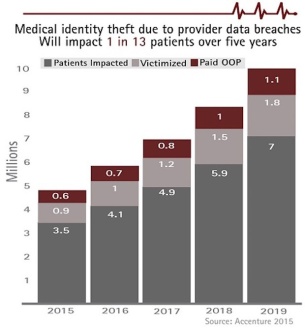Heart hackers: Cybersecurity as a threat to global health?
“One of the main cyber-threats is to think they don’t exist.”
��
With the rise of AI, blockchain and all else tech in health, challenges associated with these technologies have been easily forgotten due to their promising potential. Recent discussion at the��discussed the role of cybersecurity in the sphere of global health, in which����Prof.��of EPFL��introduced the concept of��security��as “the rightful access to data, ensuring access control, availability, audibility and accountability“, whereas��privacy��was defined as the “rightful use of data following legal imperatives and expressed wishes of the data owner“.�� With growing digital footprints, and over 110 million patients in the US having their data compromised in 2015 alone, cybersecurity is rapidly becoming a growing threat to global health [1].
��
��

��
Attacks on the health sector are usually targeted for financial gain, the most common cyberthreats in healthcare include [1]:��
- Data theft for financial gain
- Data theft for impact
- Ransomware
- Data corruption
- Denial of service attacks
- Business e-mail compromise
There has been growing concern with the extension of cybercrime to medical devices [3]. Increased wireless connectivity and remote-sensing system has left these devices vulnerable to attacks. More attention was bought to medical devices, when the��US Food and Drug Administration issued a safety communication regarding potential cybersecurity concerns involving malicious interference with battery life or essential programming functions in several pacemaker models made by St Jude Medical in 2017 [3].
Beyond what could be disastrous consequences for health systems and patients,����Nature��recently also flagged the lack of women present in the cybersecurity,��with only 11% of women in this profession worldwide [4]. Not only are women underrepresented in the industry, but women have also been reported at higher odds of being hacked –��a million more US women than men had their identities stolen in 2014 [4]. In order to stop this phenomena, the following was concluded:
"Cybersecurity’s future depends on its ability to attract, retain and promote women, who represent a highly skilled and under-tapped resource. The discipline also needs to learn about women’s experiences as victims of cybercrime and the steps needed to address the imbalance of harm"
-W.R. Poster, 2018
The development of��common security standards��and��resilience��remain key in the fight for improved Cybersecurity .
��
��
References��
��
Cybersecurity and healthcare: how safe are we?��
��
[2] Daniel B. Kramer and Kevin Fu. (2017).��Cybersecurity Concerns and Medical Devices Lessons From a Pacemaker Advisory.��Available:��. Last accessed 21/04/2018.
��
[3]��Lucas Mearian . (2016).��Hackers are coming for your healthcare records — here’s why.��Available:��. Last accessed 21/04/2018.
��
[4]��W.R. Poster . (2018 ).��Cybersecurity needs Women .��Available:��. Last accessed 21/04/2018.
��
��
12 Jul 2018